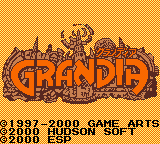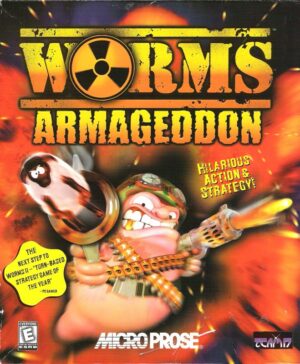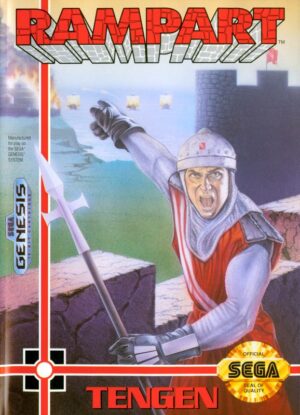Retro Replay Review
Gameplay
Grandia: Parallel Trippers takes the classic turn-based combat of its console predecessors and distills it into a Game Boy adventure that feels both familiar and refreshed. Battles play out on a simplified grid where timing your attacks and special moves against the enemy’s turn gauge is crucial. The core of the “IP Gauge” system remains intact—filling it up at the right moment allows you to unleash more powerful skills or interrupt foes before they can act. This adds a layer of strategy that keeps skirmishes engaging rather than rote.
(HEY YOU!! We hope you enjoy! We try not to run ads. So basically, this is a very expensive hobby running this site. Please consider joining us for updates, forums, and more. Network w/ us to make some cash or friends while retro gaming, and you can win some free retro games for posting. Okay, carry on 👍)
Outside of combat, exploration is a delight. You control Yuuhi, Mizuki, and Shirou as they traverse towns and dungeons inspired by the original Grandia world. Though the map layouts are more compact due to hardware constraints, the designers cleverly incorporate puzzles, hidden items, and NPC interactions that reward curiosity. Every corner you turn may reveal a brief lighthearted cutscene or a side quest that fleshes out the small cast and world lore.
Party management is straightforward yet satisfying. Each of the three protagonists brings unique abilities—Yuuhi’s balanced offense, Mizuki’s support magic, and Shirou’s utility skills—encouraging players to swap members in and out as situations demand. Equipping and upgrading gear is similarly accessible: towns feature simple shops and occasional blacksmith events where you can enhance your weapons. The pacing is smooth, making it easy to jump in for quick sessions on the go without losing track of your progress.
Graphics
On the original Game Boy hardware, Grandia: Parallel Trippers delivers surprisingly detailed sprite work and charming environments. Character sprites capture the distinct designs of both the new protagonists and series favorites like Justin, Feena, and Sue, despite the monochrome display. Animations during attacks and spellcasting are fluid, with enough frames to convey impact and elemental flair without slowing down gameplay.
The world maps are rendered in a top-down perspective, offering clear visual cues for walkable areas, obstacles, and interactive objects. Dungeon interiors use darker palettes and clever shading to evoke mood and atmosphere, making each area feel unique even within the Game Boy’s limited color range. Town exteriors, meanwhile, employ a brighter, more open look that contrasts nicely with the more constricted dungeons.
Menu screens and HUD elements are cleanly laid out, ensuring that vital information—such as HP, MP, and IP gauges—remains legible during battle. Though the resolution is low compared to the Saturn and PlayStation originals, the UI retains Grandia’s signature aesthetic. Overall, the visuals maintain a high level of polish for a portable title of its era, striking a balance between retro charm and functional design.
Story
Unlike a direct sequel, Parallel Trippers tells an entirely new tale built around three modern schoolchildren—Yuuhi, Mizuki, and Shirou—who find themselves mysteriously transported into the world of Grandia. This “fish out of water” premise allows for lighthearted banter as the trio grapples with magic, monsters, and the revelation that they are not in Kansas anymore. Their interactions bring out fresh perspectives on the Grandia universe.
As players progress, they encounter familiar faces from the original Grandia game, including Justin, Feena, and Sue. These cameo appearances are treated with affectionate nods rather than heavy canon weight. The returning characters offer guidance, side missions, or simply moments of comic relief, enriching the spin-off without altering the main timeline. For fans of the original, these reunions are delightful Easter eggs; for newcomers, they serve as brief introductions to the broader cast.
The narrative is light and episodic, focusing on whimsical quests and the trio’s attempts to find a way home. There’s no grand prophecy or world-ending threat, which makes for a breezier pace but may leave players seeking deeper drama slightly wanting. However, the story’s charm lies in its simplicity: it’s a portable romp that balances nostalgia with an accessible newcomer-friendly plot.
Overall Experience
Grandia: Parallel Trippers captures the essence of the original JRPG while adapting its mechanics and narrative for portable play. It excels at delivering bite-sized adventures that you can enjoy during short breaks or on lengthy journeys. The mix of strategic combat, light puzzles, and character-driven dialogue strikes a comfortable balance that keeps the experience varied without becoming overwhelming.
Given its hardware generation, the title makes smart sacrifices—such as simplified world maps and a more concise story—to ensure smooth performance and an approachable learning curve. Fans of the Grandia franchise will appreciate the cameos and familiar gameplay beats, while newcomers can dive in without needing prior knowledge of the series. The game’s overall length is modest, clocking in at around 15–20 hours for completionists, making it a well-sized portable RPG.
In the end, Grandia: Parallel Trippers stands as a charming spin-off that offers both fan service and solid standalone mechanics. Its engaging combat, endearing protagonists, and nods to the original cast create a memorable experience on the Game Boy. Whether you’re revisiting the Grandia universe or discovering it for the first time on a handheld, this title delivers an enjoyable journey well worth the cartridge.
 Retro Replay Retro Replay gaming reviews, news, emulation, geek stuff and more!
Retro Replay Retro Replay gaming reviews, news, emulation, geek stuff and more!





Reviews
There are no reviews yet.